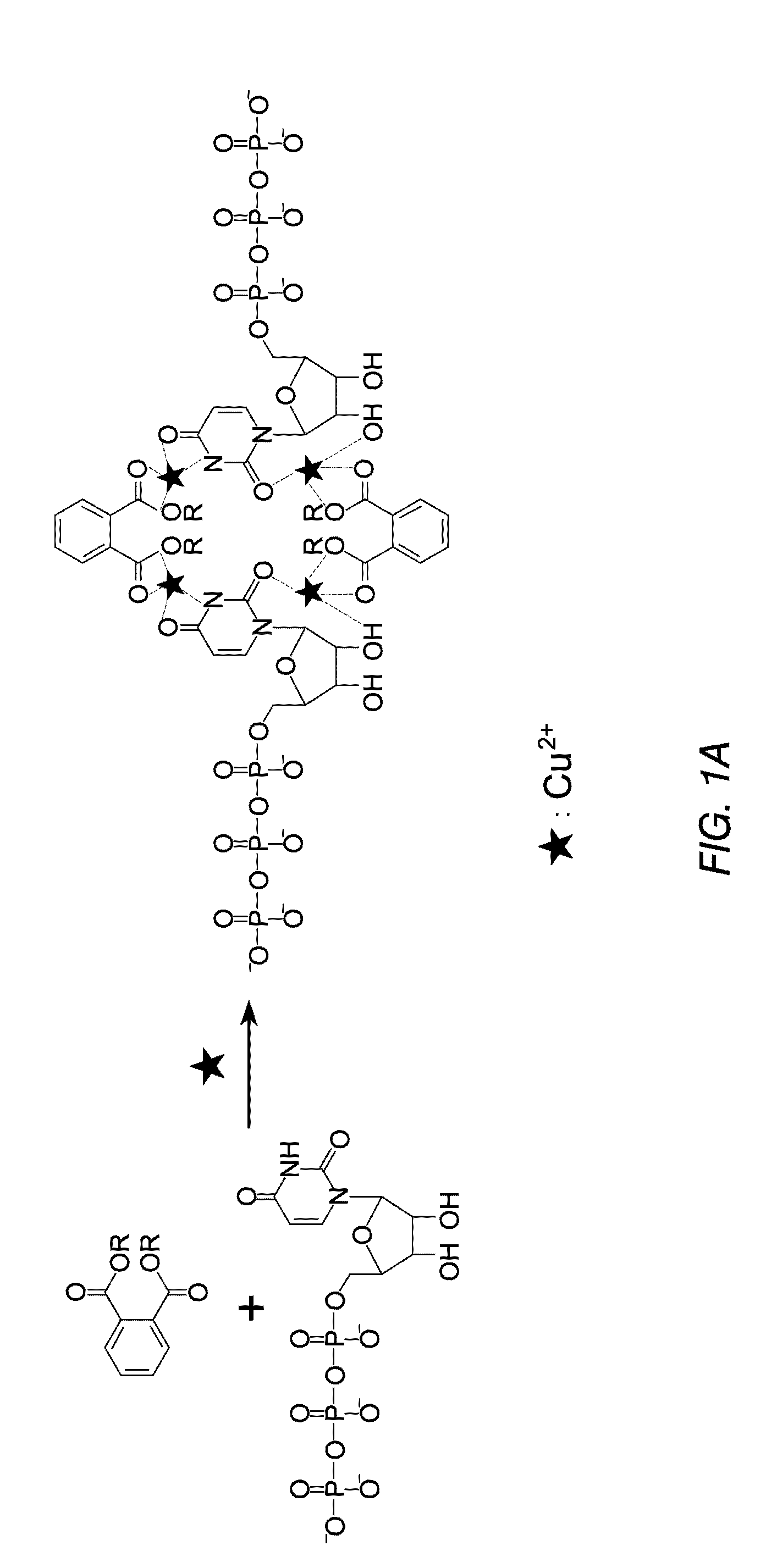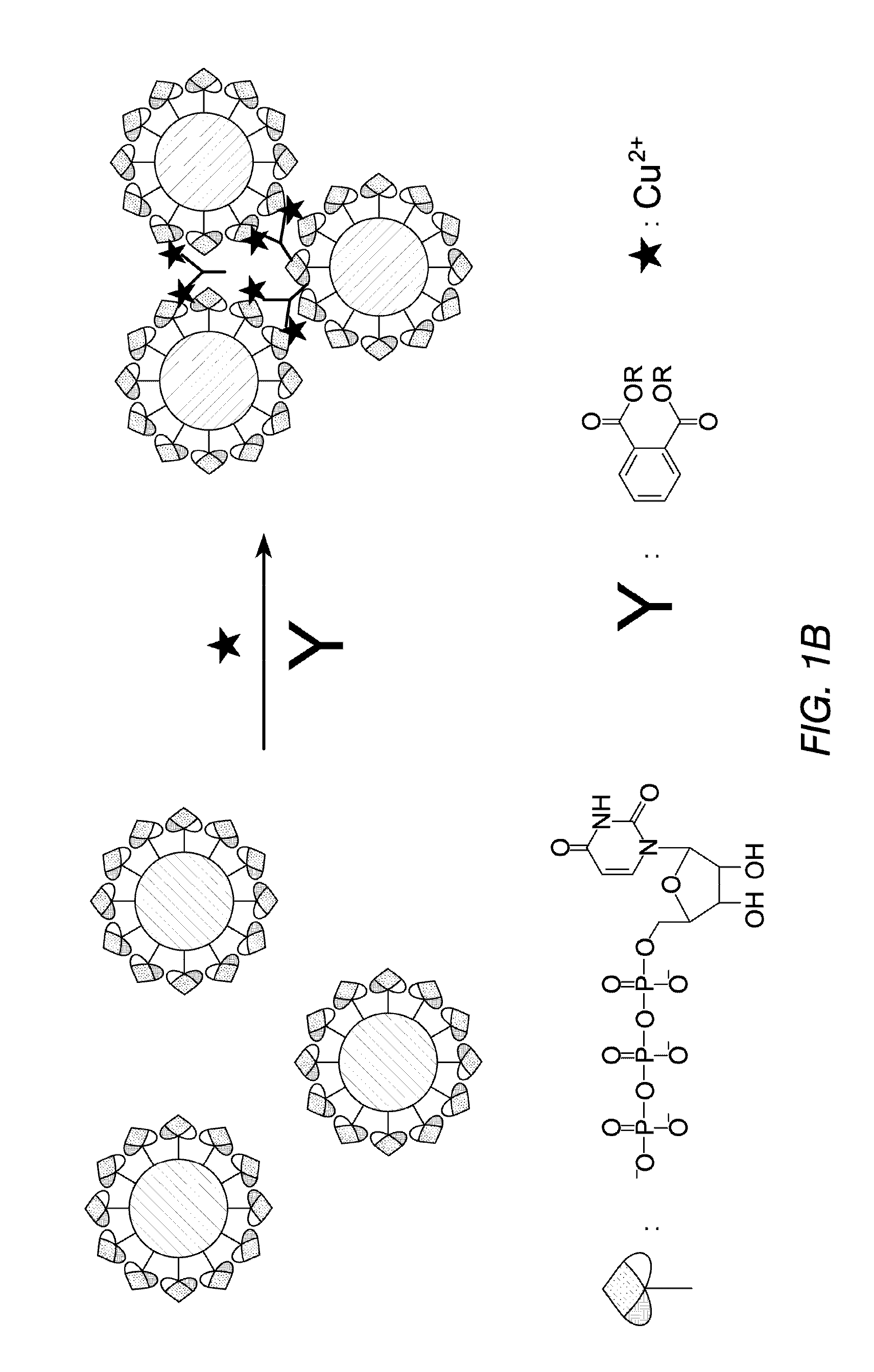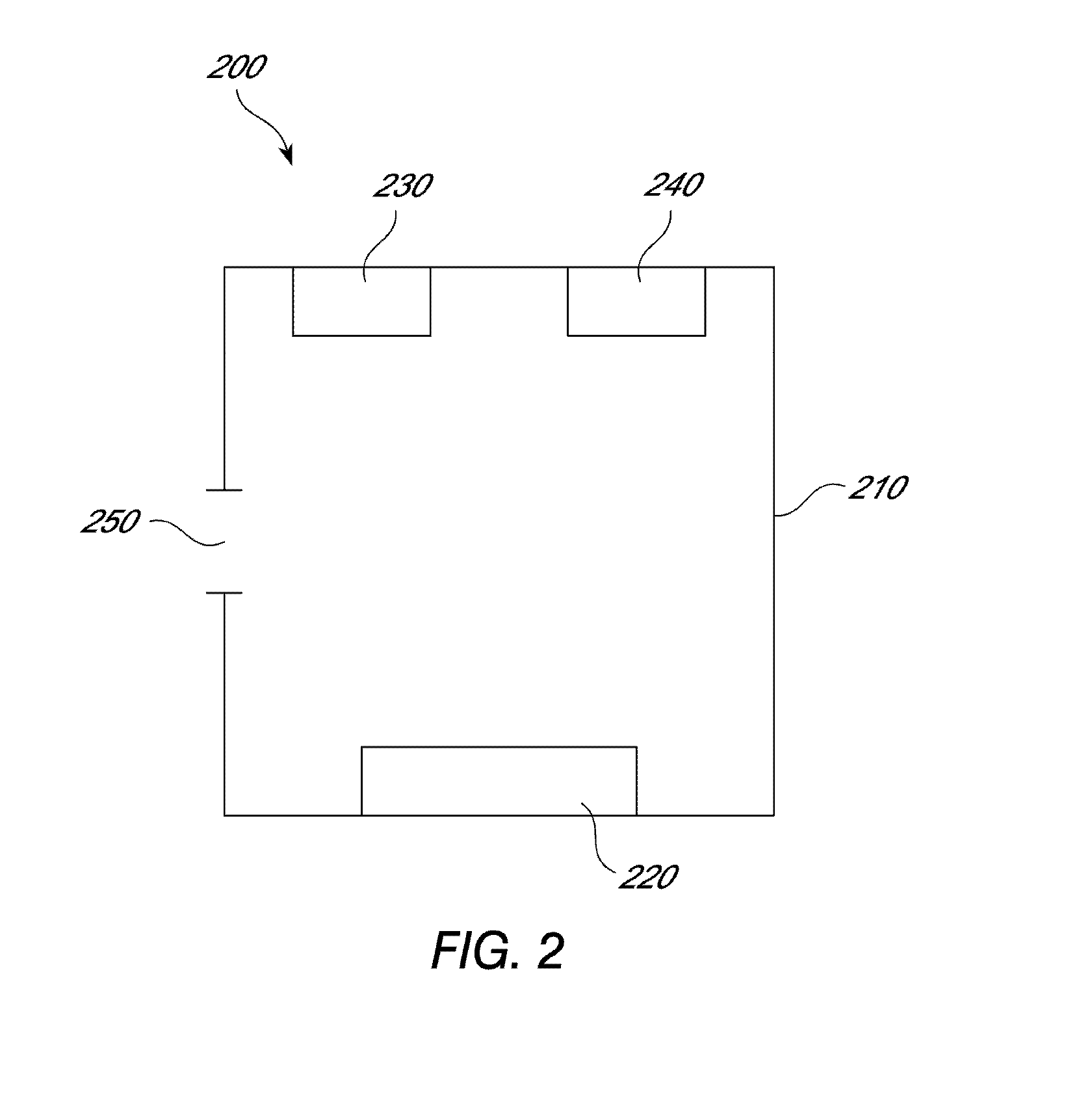Methods for detecting plasticizers
- Summary
- Abstract
- Description
- Claims
- Application Information
AI Technical Summary
Benefits of technology
Problems solved by technology
Method used
Image
Examples
example 1
Preparation of Nucleotide-Modified Gold Nanoparticles
[0068]All glassware was thoroughly cleaned overnight with freshly prepared 3:1 HCl / HNO3 (aqua regia) and rinsed thoroughly with Mill-Q water prior to use. Citrate-stabilized gold nanoparticles (AuNPs) were prepared according to the method described in Grabar et al., Int. J. Mol. Sci., 8: 526 (2007). Briefly, 100 mL of HAuCl4 (0.01%) was added to a 250 mL round bottle and then boiled. Under rapid stirring, 3.5 mL of trisodium citrate (1%) was added and further rapidly stirred for 15 minutes. After stirred for 30 minutes, the solution was then gradually cooled to room temperature, and was filtered by 0.22 μm filter paper, which was stored in the refrigerator (4° C.) before further use.
[0069]For the surface modification of AuNPs with mononucleotides, an aliquot of 30 μL (2.0 mM) uridine 5′-triphosphate (UTP), 2′-deoxyadenosine triphosphate (dATP), 2′-deoxyguanosine triphosphate (dGTP), 2′-deoxycytidine triphosphate (dCTP), 2′-deoxyth...
example 2
Physical and Optical Properties of UTP-Modified AuNPs
[0071]UTP-modified gold nanoparticles (UTP-AuNPs) were prepared according to the procedure described in Example 1. The as-prepared UTP-AuNPs were red in color and showed a characteristic absorption peak at 520 nm, which was ascribed to the surface plasmon resonance of the AuNPs. Without being bound to any particular theory, it is believed that the U-AuNPs solution can be highly stabilized against aggregation due to the negative UTP's electrostatic repulsion between AuNPs.
[0072]Transmission electron microscope (TEM) measurements of the UTP-AuNPs solution were performed on Jeol JEM-1230 instrument operated at an accelerating voltage of 80 kV. Samples for TEM studies were prepared by placing a drop of UTP-AuNPs solution on a copper grid. The films on the TEM grids were allowed to dry for 2 minutes following that extra solution was removed using a blotting paper. Photographs were taken with Nikon D3100 digital camera (Tokyo, Japan). A...
example 3
Detection of Phthalates Using UTP-Modified AuNPs
[0074]UTP-modified gold nanoparticles (UTP-AuNPs) were prepared according to the procedure described in Example 1. The UTP-AuNPs were challenged to various concentrations of Cu2+ in the absence or presence of di (2-ethyl-hexyl) phthalate (DEHP). The absorption ratio (A610 / A520) of U-AuNPs was measured. The results are shown in FIG. 4A-F. The results indicate that absorption ratio (A610 / A520) of U-AuNPs is sensitive to the concentrations of Cu2+.
[0075]To determine the ability of UTP-modified AuNPs for detecting DEHP in 0.4 μM Cu2+, colorimetric assays were carried out as follows: an aliquot of 50 μL mixed solution containing 10 μL 4 μM CuCl2, 10 μL various concentration of DEHP dissolved in ethanol, 10 μL 10×NaNO3-MOPS buffer (500 mM NaNO3 and 200 mM 3-(4-morpholinyl)-1-propanesulfonic acid, pH 7.0) and 20 μL Mili-Q water was placed in the wells of a transparent 384-well microtiter plate. Then, 50 μL mononucleotides-modified AuNPs was a...
PUM
 Login to View More
Login to View More Abstract
Description
Claims
Application Information
 Login to View More
Login to View More - R&D
- Intellectual Property
- Life Sciences
- Materials
- Tech Scout
- Unparalleled Data Quality
- Higher Quality Content
- 60% Fewer Hallucinations
Browse by: Latest US Patents, China's latest patents, Technical Efficacy Thesaurus, Application Domain, Technology Topic, Popular Technical Reports.
© 2025 PatSnap. All rights reserved.Legal|Privacy policy|Modern Slavery Act Transparency Statement|Sitemap|About US| Contact US: help@patsnap.com



